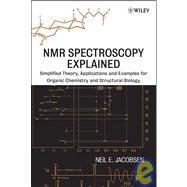
| Preface | |
| Acknowledgments | |
| Fundamentalsof NMR Spectroscopy in Liquids | |
| Introduction to NMR Spectroscopy | |
| Examples: NMR Spectroscopy of Oligosaccharides and Terpenoids | |
| Typical Values of Chemical Shifts and Coupling Constants | |
| Fundamental Concepts of NMR Spectroscopy | |
| Interpretation of Proton (1H) NMR Spectra | |
| Assignment | |
| Effect of Bo Field Strength on the Spectrum | |
| First-Order Splitting Patterns | |
| The Use of 1H-1H Coupling Constants to Determine Stereochemistry and Conformation | |
| Symmetry and Chirality in NMR | |
| The Origin of the Chemical Shift | |
| J Coupling to Other NMR-Active Nuclei | |
| Non-First-Order Splitting Patterns: Strong Coupling | |
| Magnetic Equivalence | |
| NMR Hardware and Software | |
| Sample Preparation | |
| Sample Insertion | |
| The Deuterium Lock Feedback Loop | |
| The Shim System | |
| Tuning and Matching the Probe | |
| NMR Data Acquisition and Acquisition Parameters | |
| Noise and Dynamic Range | |
| Special Topic: Oversampling and Digital Filtering | |
| NMR Data Processing-Overview | |
| The Fourier Transform | |
| Data Manipulation Before the Fourier Transform | |
| Data Manipulation After the Fourier Transform | |
| Carbon-13 ( 13 C) NMR Spectroscopy | |
| Sensitivity of 13 C | |
| Splitting of 13 C Signals | |
| Decoupling | |
| Heteronuclear Decoupling: 1 H Decoupled 13C Spectra | |
| Decoupling Hardware | |
| Decoupling Software: Parameters | |
| The Nuclear Overhauser Effect (NOE) | |
| Heteronuclear Decoupler Modes | |
| NMR Relaxation-Inversion-Recovery and the Nuclear Overhauser Effect (NOE) | |
| The Vector Model | |
| One Spin in a Magnetic Field | |
| A Large Population of Identical Spins: Net Magnetization | |
| Coherence: Net Magnetization in the x-y Plane | |
| Relaxation | |
| Summary of the Vector Model | |
| Molecular Tumbling and NMR Relaxation | |
| Inversion-Recovery: Measurement of T 1 Values | |
| Continuous-Wave Low-Power Irradiation of One Resonance | |
| Homonuclear Decoupling | |
| Presaturation of Solvent Resonance | |
| The Homonuclear Nuclear Overhauser Effect (NOE) | |
| Summary of the Nuclear Overhauser Effect | |
| The Spin Echo and the Attached Proton Test (APT) | |
| The Rotating Frame of Reference | |
| The Radio Frequency (RF) Pulse | |
| The Effect of RF Pulses | |
| Quadrature Detection, Phase Cycling, and the Receiver Phase | |
| Chemical Shift Evolution | |
| Scalar (J) Coupling Evolution | |
| Examples of J-coupling and Chemical Shift Evolution | |
| The Attached Proton Test (APT) | |
| The Spin Echo | |
| The Heteronuclear Spin Echo: Controlling J-Coupling Evolution and Chemical Shift Evolution | |
| Coherence Transfer: INEPT and DEPT | |
| Net Magnetization | |
| Magnetization Transfer | |
| The Product Operator Formalism: Introduction | |
| Single Spin Product Operators: Chemical Shift Evolution | |
| Two-Spin Operators: J-coupling Evolution and Antiphase Coherence | |
| The Effect of RF Pulses on Product Operators | |
| INEPT and the Transfer of Magnetization from 1 H to 13 C | |
| Selective Population Transfer (SPT) as a Way of Understanding INEPT Coherence Transfer | |
| Phase Cycling in INEPT | |
| Intermediate States in Coherence Transfer | |
| Zero- and Double-Quantum Operators | |
| Summary of Two-Spin Operators | |
| Refocused INEPT: Adding Spectral Editing | |
| DEPT: Distortionles | |
| Table of Contents provided by Publisher. All Rights Reserved. |
The New copy of this book will include any supplemental materials advertised. Please check the title of the book to determine if it should include any access cards, study guides, lab manuals, CDs, etc.
The Used, Rental and eBook copies of this book are not guaranteed to include any supplemental materials. Typically, only the book itself is included. This is true even if the title states it includes any access cards, study guides, lab manuals, CDs, etc.